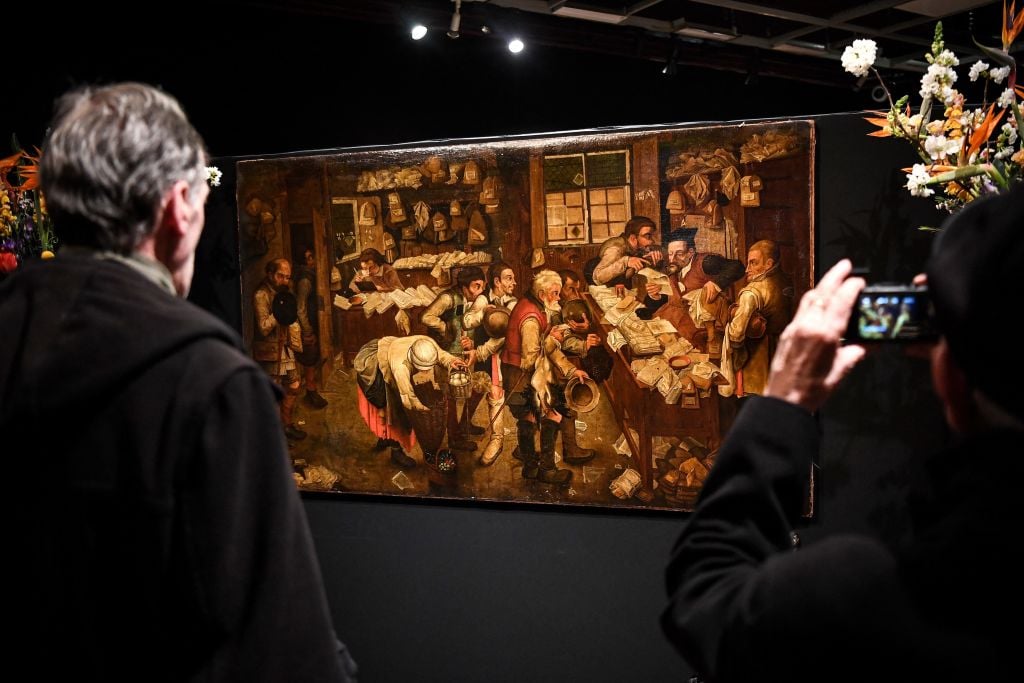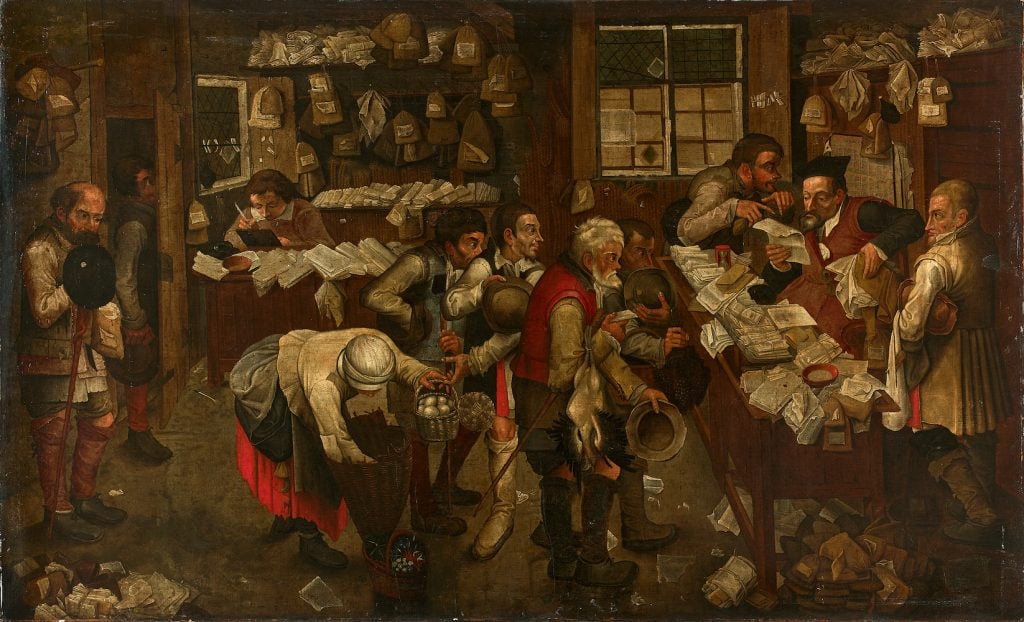Auctions
A Home Appraiser Spotted a 500-Year-Old Brueghel Painting in a Family’s T.V. Room. They Just Sold It for $845,000
For generations, the family that owned the artwork believed it was a cheap knockoff.

For generations, the family that owned the artwork believed it was a cheap knockoff.

Taylor Dafoe

Earlier this year, a family in northern France called on auctioneer Malo de Lussac to appraise the value of their home. But when the expert arrived, he spotted something potentially even more valuable: a 500-year-old painting by the Flemish artist Pieter Brueghel the Younger.
“I arrived in a small television room which was not very well lit. I started making my estimates in the living room and turning around behind the door, there were two-thirds of the painting visible,” de Lussac, who works for Paris’s Daguerre Val de Loire auction house, told the Associated Press. “And that’s when in fact I discovered the painting. It was a bit of a surprise.”
The artwork, believed to have been painted between 1615 and 1617, highlighted Daguerre Val de Loire’s auction of drawings, paintings, and autographs in Paris this week. It carried a pre-sale estimate of €600,000 to €800,000 ($650,000 to $866,000).
After a bidding battle, the painting sold for €780,000 ($845,000), including fees, to an unnamed Swiss buyer.
Prior to the sale, the painting had been with the same family since 1900. As it was passed down from generation to generation, information about the work was lost.
By the time de Lussac espied the painting, the family—which has chosen to remain anonymous—had long assumed it to be a cheap reproduction of an original. They called it “the Brueghel” as a joke.

Pieter Brueghel the Younger, L’avocat du village (c. 1615-1617). Courtesy of Daguerre and Drouot.
“The family ancestors bought the painting as an original, but over the years the real story was completely lost orally,” the auctioneer said. “Yes, they called it the Brueghel, but they had no idea it actually was!”
De Lussac called the discovery “the biggest moment of my career,” even if he tempered expectations upon first laying eyes on the artwork. “Of course I was cautious. It is after all rather rare to find a Brueghel hanging in a television room,” he said.
After the expert’s visit, the family sent the canvas to Germany, where experts confirmed it to be a genuine Brueghel.
The painting, titled L’Avocat du village (or The Village Lawyer), depicts a bustling scene in an office, where villagers are lined up to meet with a local lawyer. At 72 inches wide, it’s by far the largest of the many versions of the same picture painted by Brueghel. Another authenticated rendition of the painting lives in the collection of the Louvre, for instance; it measures only 31 inches.
Born in Brussels in 1564, Brueghel painted pastoral landscapes and village scenes, as well as reproductions of works by his father, Pieter Brueghel the Elder, who is widely recognized as one of the most influential artists of the Dutch renaissance era.